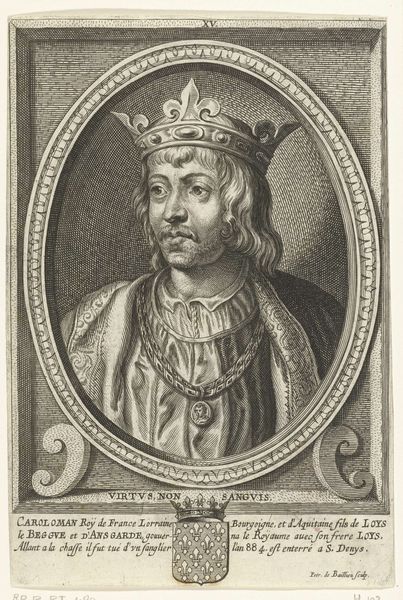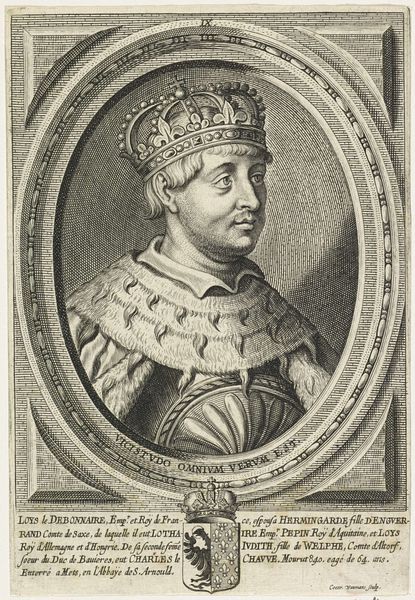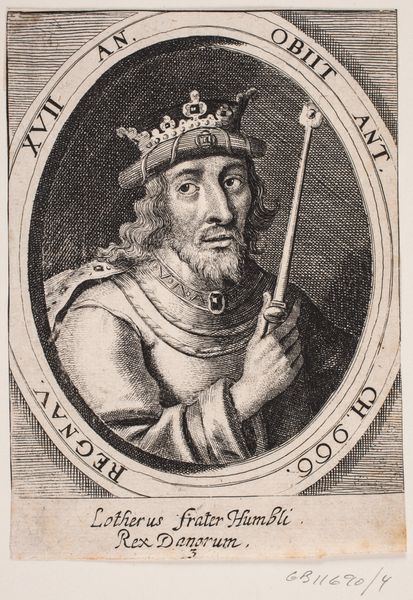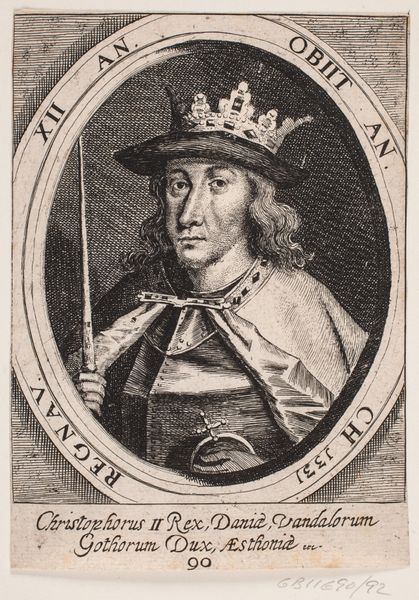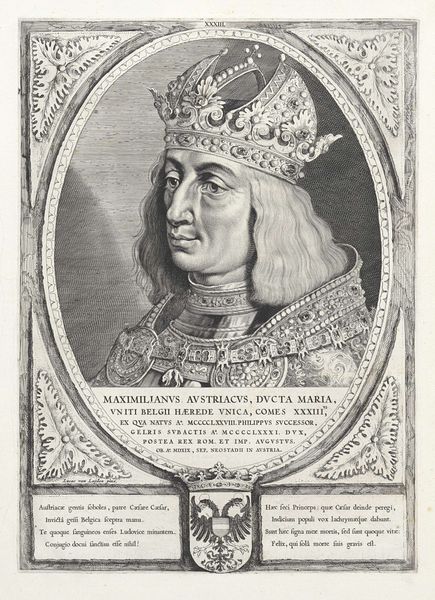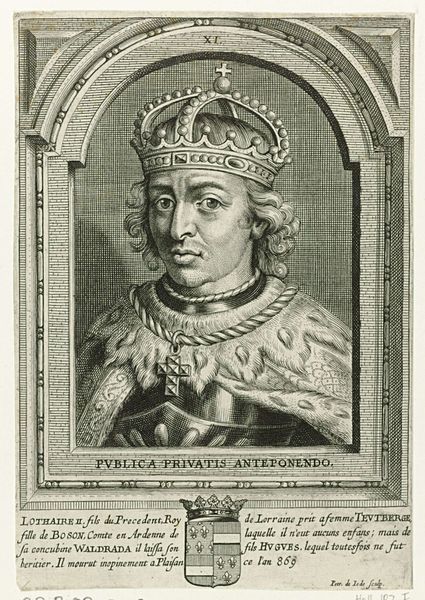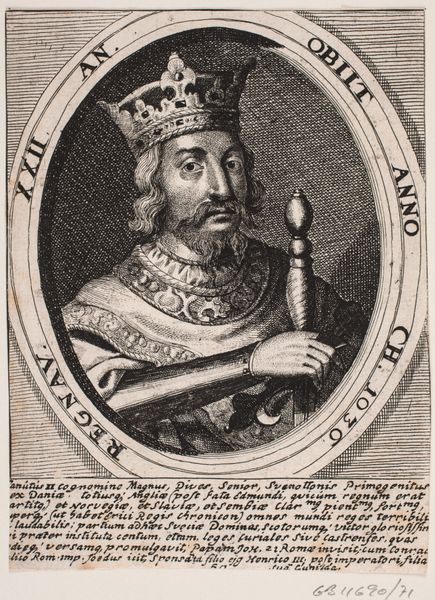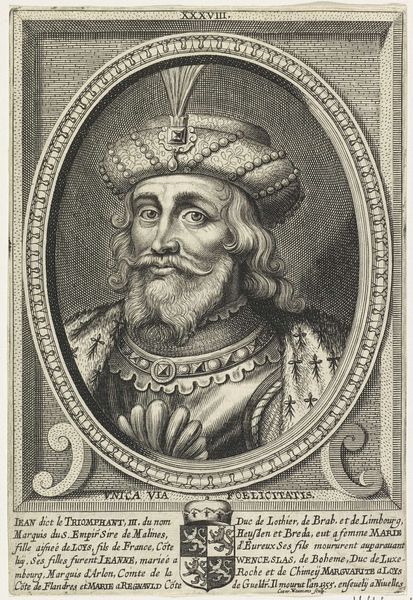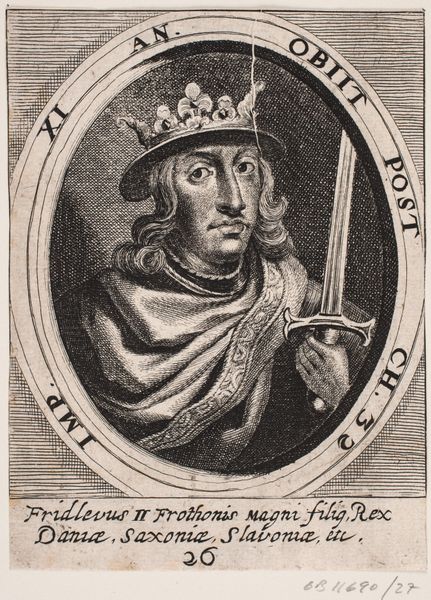
print, engraving
#
portrait
#
baroque
# print
#
history-painting
#
engraving
Dimensions: height 175 mm, width 119 mm
Copyright: Rijks Museum: Open Domain
Coenraet Waumans created this engraving of Lodewijk III, King of France. Royal portraiture like this served a key political purpose in 17th century Europe. The image of the King, with his crown and royal garb, was designed to project an aura of power and legitimacy. The Latin inscription, "Virtus Non Sanguis" suggests that his reign would be defined by virtue rather than blood. Engravings like this one, produced in the Netherlands, were widely circulated as visual propaganda. Note the prominent display of his family's coat of arms which underscored his lineage and claim to the throne. The inscriptions served to embed the portrait within a network of historically significant figures. These prints, often commissioned by the royal court, reinforced the King’s divine right to rule and legitimized the existing social order. To fully understand such images, art historians research not just the life of the King, but also the social and political conditions that shaped their production and reception.
Comments
No comments
Be the first to comment and join the conversation on the ultimate creative platform.
